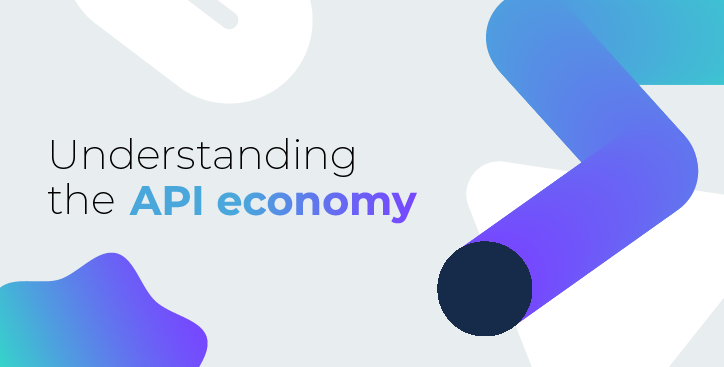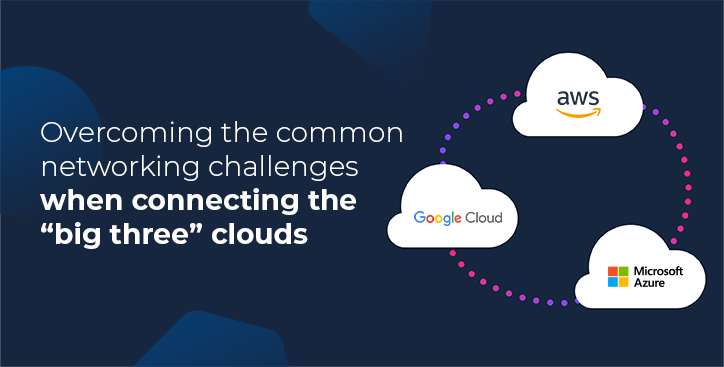Understanding the API economy
By Alex Hawkes|21 August, 2023

APIs (Application Programming Interfaces) have been around for decades, but although the concept emerged as far back as the 1940s, it wasn’t until the early 2000s and the efforts of eBay, Salesforce, and Amazon that really put them on the map.
APIs today are ubiquitous - any company developing software will likely have an API for customers and partners - and research suggests the majority of enterprises consuming APIs are focused on strategies for easier consumption and management of APIs. It’s a long road however, while almost one third of organisations (31%) have a fully executed API programme today, at least 64 per cent are in the process of building one.
The reason for this urgency to better manage APIs? The ‘API economy’ - an interconnected patchwork of otherwise disparate ecosystems that lets developers leverage other applications and services in a way that dramatically accelerates innovation while decreasing time to market. APIs are the forefront of innovation right now.
Such is the perceived potential of APIs that companies single-mindedly seeking to solve the problem of management and integration have seen their valuations skyrocket.
In early 2019 Salesforce paid out $6.5bn for MuleSoft, a management platform for APIs, then in 2020 Visa agreed to pay $5.3bn for financial API network Plaid. The Visa deal was shut down by antitrust authorities in 2021 but Plaid’s valuation jumped to over $13bn in its wake as the importance of these digital pipes shows no sign of decline.
What is an Application Programming Interface (API)?
Broadly speaking, APIs enable different systems to talk to each other, quickly and easily. APIs ensure that data is extracted and formatted from one system in a way that it can be ingested by another system or application accurately and securely.
It used to be that a human operator would need to rely on the user interface (UI) of a specific application in order to work with it. Multiple applications meant jumping between multiple UIs. This is not a particularly efficient way of working and if data from one system needed to be used in another, the process of manually exporting the data, formatting it for use, and then importing it into another system, becomes very frustrating.
With the adoption of the cloud and the SaaS (Software as a Service) model of consumption, the number of applications relied on by any business has skyrocketed, and the need for more manageable ways of aggregating, analysing and using that data grew in importance.
That said, it’s not just the simple export/import of data between two or more applications that has been revolutionary, it’s bringing multiple different data streams together in one place where APIs have enabled innovation at a speed never before possible, with developers able to create brand new businesses almost overnight by integrating deep systems they did not have to build themselves.
The rise of the API economy
The API economy has emerged in the wake of fast, simplified access to application data in a modular fashion, allowing developers to build new apps that leverage this data while the data providers themselves benefit commercially from their APIs.
Apps like Uber simply wouldn’t have been possible in the time before APIs, because the creation of all the modular components the company relies on would have been too great an undertaking for one company.
Uber as an API use case
Uber uses APIs from Google Maps to enable drivers to find local fares and for riders to locate their designated car. APIs from Twilio underpin the messaging stack enabling in-app notifications that the driver is arriving and for setting up the anonymised calling between driver and rider that protects both parties’ privacy. Sendgrid APIs are used to enable the delivery of ride receipts and updates by email, and payment gateway APIs have been provided alternately by Braintree and Paypal over the years.
Developing such an infrastructure from the ground up would have been an insurmountable task, and the API economy has helped companies like Uber go from idea to product faster by leveraging existing technology. In some cases, you just need the idea.
Another good example is travel booking companies like Expedia, Booking.com, and even Airbnb. These companies heavily leverage web scraping APIs to show the customer the best deals on properties and hotels in their search area, pulling data from a variety of sources. Yet more APIs manage the actual booking, availability and vacancies, and other APIs run the payments infrastructure.
Anything payments focused is part of a big sector in APIs as these pipes could be used by any company that needs to send or receive funds - so probably most of them.
Coming back to Plaid, the company Visa failed to acquire and its reasons for the attempt, it’s thought that one in every three people with a US bank account has used a service built on Plaid’s APIs to connect that bank to the app or service of their choosing. Those services could be cash sending service Venmo, or crypto exchanges such as Robinhood. APIs mean companies can develop very user friendly applications very quickly creating a snowball effect of more demand. In fact, APIs are one of the key reasons business applications have become more ‘consumerised’ in recent years.
APIs in AI
Of course, one of the big trends of 2023 is generative AI, and companies are falling over themselves to augment their products with AI prompt capabilities, all of which are accomplished via APIs.
There are those who predict that the next evolution of the point and click UI will be prompt-based, with users sending simple - or complex - voice or text commands, such as: “Move $100 from my personal account to my crypto trading wallet,” to “Show me all critical vulnerabilities in my global cloud infrastructure”. The prompt is then executed by an AI-powered engine which comes back with the results.
It’s not gone unnoticed that the Forbes Cloud 100 list, which is meant to represent cloud leaders, is effectively a list of APIs, and in 2023 is topped by the big name in AI, OpenAI.
Interestingly however, the top ‘category’ of APIs in use by a long shot remains ‘social’. If we look at this list of Top 50 APIs in 2023, around 20%of them are connectors for social apps including TikTok, Instagram and YouTube embedding the use case for APIs in apps used by millions of people.
In part two of this blog, we will look at the role of APIs in cloud connectivity and networking

.jpg)





.jpg)

